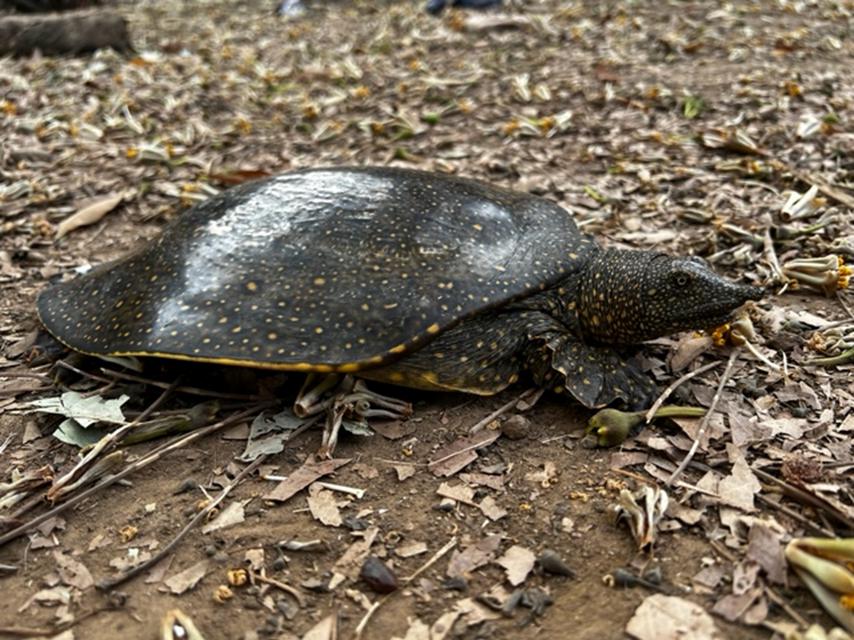Pearson McGovern
This project consists of both short and long-term objectives, with the immediate aim being the confirmation of the presence of African Softshell Turtle populations in Senegal. In addition, we hope to document the current distribution of this species in Senegal, determine the current status of populations, define priority areas for long-term protection, and analyse the habitat variables that characterize suitable habitat for this species in this portion of their range. Most importantly, we also aim to work closely with local communities to both increase the breadth of our search efforts as well as augment our local knowledge of this species and its remaining habit. Working closely with local collaborators is our best chance for long-term support and the long-term success of conserving this species in Senegal.

The African Softshell Turtle (Trionyx triunguis) is the only extant member of the genus Trionyx and ranges from the shores of West Africa all the way to the Mediterranean Sea. Though this species remains understudied throughout its’ vast range (considered an EDGE species), populations in West Africa have been particularly overlooked. Additionally, in western Africa, populations are presumed to have plummeted over the last two generations (~50 years), with catch per unit effort decreasing by up to 98% (IUCN). These drastic declines, coupled with a severe lack of scientific and conservation attention in the region, have led our team to pursue the first study focused on this species in Senegal. With <5 confirmed, documented sightings in the country, our efforts will be primarily aimed at confirming the African Softshell Turtles’ current presence in Senegal.
We will focus our efforts on historic localities and work closely with local communities to both aid in our search and to learn the history of the areas. These informal interviews may allow us to evaluate the potential causes for local extirpations in previously confirmed sites, or, alternatively, give us insight into the reasons for finding still thriving populations. Upon confirming presence sites for this species in Senegal, we will begin to monitor all documented populations to evaluate threats, population status, and habitat characteristics. These findings will provide critical data on the basic ecology of this declining and elusive species as well as for mitigating current population stressors. We plan to continue consistent and long-term monitoring of all confirmed presence sites to track population trends and to form local collaborative partnerships with local communities. Local involvement will be paramount to ensure the long-term success of our conservation goals and will be fostered through our engagement of local fishermen and their riverine communities in our plans.